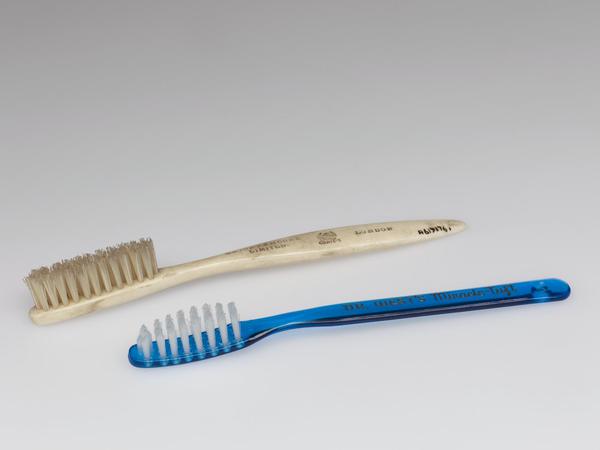The history of mankind is also a history of dental diseases. While animals rarely suffer from tooth decay or gingivitis, people have been plagued by mouth rot since the invention of agriculture: the chyme made from grain sticks to the teeth and is partially converted into sugar when chewed, an ideal breeding ground for caries bacteria.
The attempts to scrub the deposits of the dangerous mush from your teeth are correspondingly old. Already more than 5000 years ago Egyptians and Babylonians used the fibrous ends of small twigs for this purpose. Branches of the arrack tree, also known as the toothbrush tree, are particularly suitable, with which Mohammed is said to have brushed his teeth, because they contain small amounts of fluoride in addition to fine crystals.
Wild boar bristles and horse hair
The toothbrush as we know it today was invented in China in 1500 AD – the bristles of wild boars, preferably those of thick-haired animals from the north, were attached to handles made of bone or bamboo. In Europe, however, the invention only caught on very hesitantly and for a long time was only affordable for the rich anyway.

The wild boar bristles, which were felt to be too hard, were often replaced by horse hair, both of which were only hygienic to a limited extent. The Englishman William Addis of Clerkenwald started the first mass production around 1780. As a prison inmate, he had had enough leisure to develop a prototype and finally died a rich man.
The invention of the chemist
However, a special invention was needed to make the toothbrush a hit with the masses. The world owes that to the gifted and depressed chemist Wallace Hume Carothers, who reluctantly accepted a job at the American company DuPont in 1928. As a researcher and developer, he had extensive freedom there and decided to prove the existence of “polymers” by producing them himself: long chains of always the same molecules.
In early 1934 he made a breakthrough: the production of a polyamide that the company later called nylon. The new material was soft, durable and, because of its hygienic smoothness, ideally suited to replacing the animal hair on previous toothbrushes. On February 24, 1938, 85 years ago today, DuPont started production of the new toothbrush, the “Dr West’s ‘Miracle Tuft’ toothbrush.”
Carother did not live to see this day, nor did Dupont, who later produced nylon stockings that shaped the culture. He had already taken his own life in 1937. But his invention came at the right time: over the last century, sugar has become ubiquitous in the diet, adding to the problem of tooth decay.
To home page


